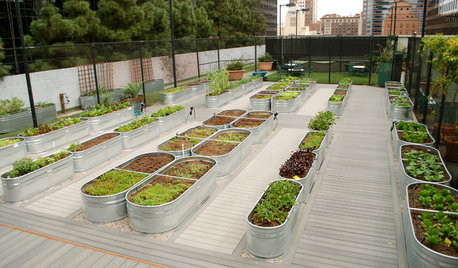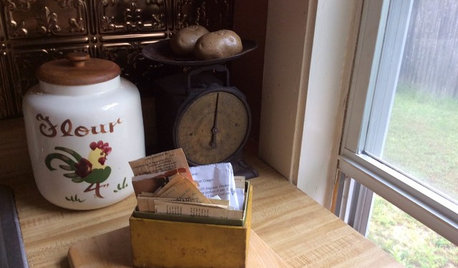Recipe for a well-drained but rich container soil
bill585
9 years ago
Related Stories

GARDENING GUIDESHouzz TV: Make a Worm Bin for Rich Soil and Happy Plants
A worm-powered compost bin that can fit under a sink turns food scraps into a powerful amendment for your garden. Here’s how to make one
Full Story
CONTAINER GARDENSContainer Gardening Basics: The Dirt on Soil
Learn the types of potting soil available and the best mixes to help your containers thrive
Full Story
FARM YOUR YARDHow to Get Good Soil for Your Edible Garden
The nutrients in your soil feed the plants that feed you. Here are tips on getting it right — just in time for planting season
Full Story
GARDENING GUIDES10 Solutions for Soggy Soil
If a too-wet garden is raining on your parade, try these water-loving plants and other ideas for handling all of that H2O
Full Story
GARDENING GUIDESGet the Dirt on Your Garden’s Soil
Understand how your soil supports your plants so you can ensure your garden’s success
Full Story
FARM YOUR YARDHow to Grow Vegetables in Containers
Get glorious vegetables and fruits on your patio with a pro’s guidance — including his personal recipe for potting mix
Full Story
LANDSCAPE DESIGNRecipe for Modernist Edible Garden Style
Herbs, vegetables and fruit trees aren’t just for traditional gardens. Here’s how to design them into modernist landscapes
Full Story
LANDSCAPE DESIGNHow to Shape a Rain Garden and Create the Right Soil for It
Learn how to grade, lay out and amend the soil in your rain garden to support your plants
Full Story
GARDENING GUIDESGardening Solutions for Dry, Sandy Soils
Has your desert or beachy site withered your gardening creativity? Try these ideas for a beautiful, easy-care landscape
Full Story
KITCHEN DESIGN5 Home Cooks Share Their Favorite Family Recipes
Peek inside the kitchens of these Houzz users and learn how to cook their time-tested, passed-down dishes
Full Story





Laurel Zito
Laurel Zito
Related Professionals
Folsom Landscape Architects & Landscape Designers · Norton Shores Landscape Architects & Landscape Designers · Cicero Landscape Contractors · Fair Lawn Landscape Contractors · Indianapolis Landscape Contractors · Live Oak Landscape Contractors · Oak Harbor Landscape Contractors · Parkland Landscape Contractors · Welby Landscape Contractors · Northlake Landscape Contractors · Ankeny Decks, Patios & Outdoor Enclosures · Gaithersburg Decks, Patios & Outdoor Enclosures · Glendale Decks, Patios & Outdoor Enclosures · Leander Decks, Patios & Outdoor Enclosures · Oak Ridge Decks, Patios & Outdoor Enclosuresbill585Original Author
Laurel Zito
gardengal48 (PNW Z8/9)
Laurel Zito
bill585Original Author
nil13
bill585Original Author
gardengal48 (PNW Z8/9)
nil13
nil13
bill585Original Author